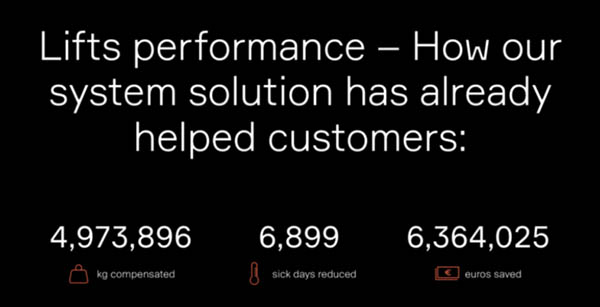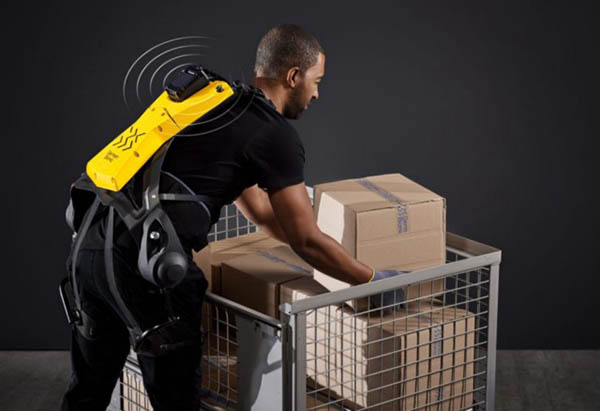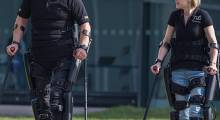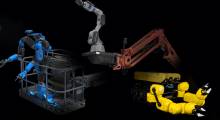The COVID-19 pandemic has propelled e-commerce to stratospheric heights, with sales skyrocketing over 30% in 2020 and close to 40% in 2021. Globally, online shopping jumped to nearly $30 trillion, led by Alibaba and Amazon. This shift in consumer behavior has accelerated the adoption of warehouse automation, as packaging systems are estimated to climb to $69 billion by 2025.
At the center of this revolution are unmanned systems. Robots excel at dull, repetitive tasks like moving pallets. However, humans still exceed their mechanical counterparts in delicate creative tasks that require high levels of tactile dexterity. This paradox has led many roboticists to take a dramatically different approach to using mechatronics to streamline productivity.
In place of traditional robots to augment labor, these innovators outfit workers with cyborg appendages to increase employee productivity. One example of this approach is German Bionic's Cray X exoskeleton.
German Bionic provides power to workers
Rather than replacing employees with robots, customers of German Bionic can elevate their current workforces to new strengths and purposes. I recently spoke with Armin Schmidt, German Bionic’s CEO and founder. He elaborated on his philosophy of “injecting power” into humans via the exoskeletons. This strikes at the heart of competitive advantage.
Unlike passive systems like SuitX and HeroWear, the Cray X uses battery power to provide back and upper-limb support. Also, the German Bionic systems are packed with artificial intelligence and analytics that track usage and adjust to worker behaviors to improve performance.
Now with the fifth generation, the company has taken its platform to the next step with walking assistance, longer battery life, and fully weatherproof indoor/outdoor environmental casing. This product launch comes on the heels of its North American expansion with U.S. customers and an office in Boston.
CrayX uses deep learning to monitor fatigue
The new Cray’s deep learning functionality monitors movement and especially fatigue to optimize performance and inject power into humans when they need it most.
“Fatigue is one of the major risk factors for the human when you work for a long time when you get some accident it hurts you,” said Schmidt. “It recognizes your behavior, your movements, and what you lift.”
He further explained that the wearable device pushes updates, via the cloud, based upon dynamic feedback and usage from the field to users. This adds an element of gamification to their work.
“This is the first time the user understands what they lifted during the day,” boasted Schmidt. For example, the system could tell users they “lifted five elephants” worth of goods, he said. Seeing that accomplishment can motivate workers to exceed their goals the next day, similar to monitoring one’s steps on an Apple watch.
“We don’t want to create the iron man, but to supercharge the human on its weak points,” Schmidt said. “We want to inject power to make the human more healthy.”
He also shared German Bionic's future plans, hinting that lower limbs are on the first part of a larger product story. Schmidt is looking to expand to new verticals with more extremity augmentation.
Today, the company is working with DHL, BMW, Ikea, and close to 100 other customers worldwide. It claims to have the most units active in the field.

AI promises to automate more workflows
From connected humans to connected cars, AI offers the most significant game-changing opportunity of harnessing physical assets on the ground. The topic of automating analog workflows is the impetus for ff Venture Capital’s Drone & Robotics Summit on Sept. 20, 2022, in New York City.
Companies in the ffVC portfolio are already revolutionizing farming, logistics, infrastructure, and food deliveries. As governments and startups work to collaborate in redefining the human-machine relationship in factories, warehouses, offices, and homes, the summit aims to bridge the gaps between inventors, investors, and policymakers.
To date, ffVC has a roster of keynotes and panels from leading think tanks, academic labs, accelerators, banks, corporate research centers, and startup innovators. Parties interested in attending or speaking at the show can apply today.

About the author
Oliver Mitchell is a partner at ff Venture Capital. His areas of focus are drones, robotics, and applied AI. Mitchell is also an adjunct professor at Yeshiva University. This column is reposted with permission.
Article topics
Email Sign Up
















